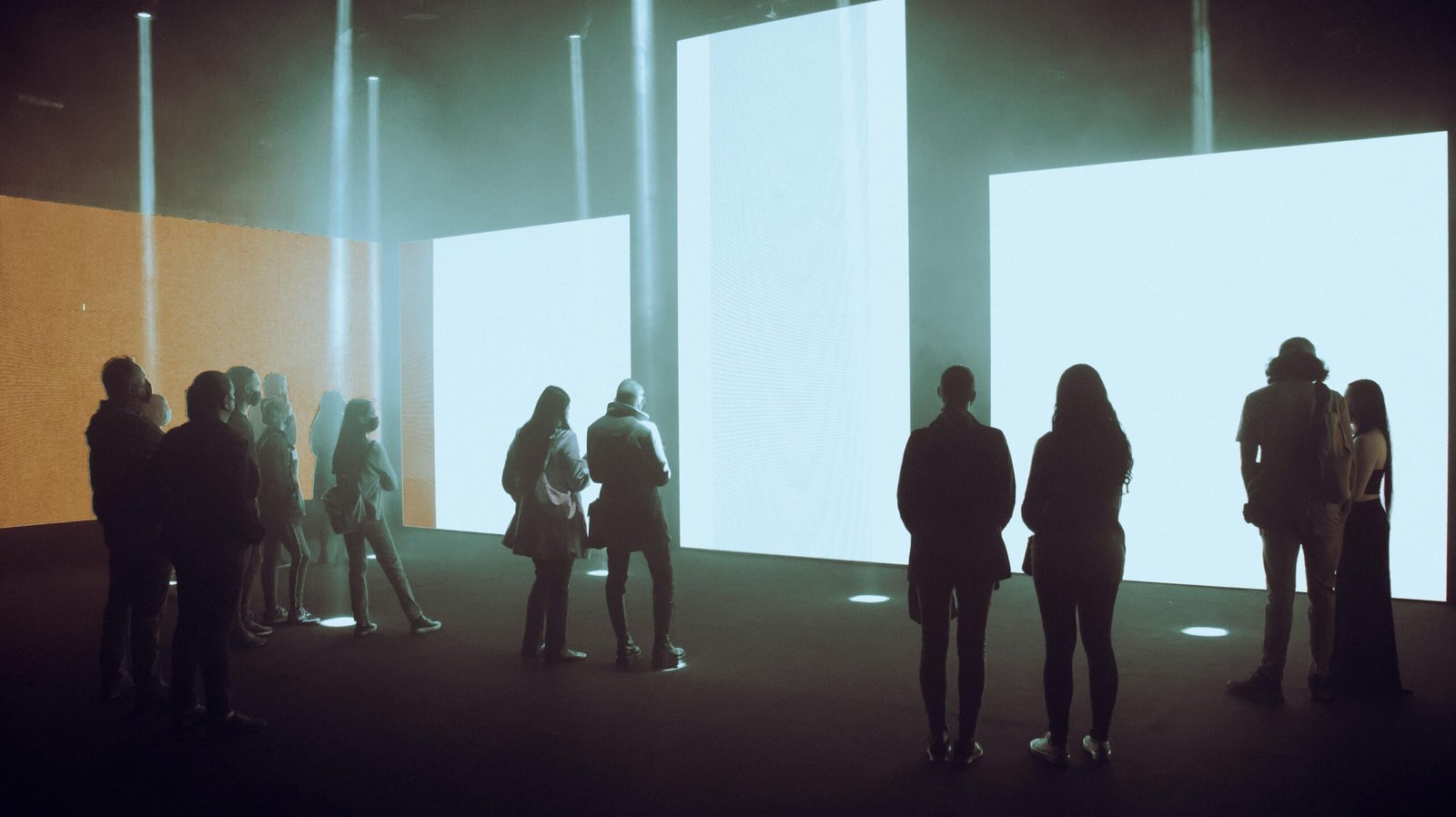
Power, Platforms, and Gatekeeping in the Digital Art World
Abstract
This article examines how power dynamics, ideological structures, and gatekeeping mechanisms shape the contemporary digital art world. Drawing on critical theory and media studies, it explores how digital platforms function both as democratizing spaces and sites of exclusion. The role of tastemakers, gatekeepers, and algorithmic influences is analyzed to understand their impact on artistic visibility, recognition, and creative autonomy. The study highlights the tension between expanding access and persistent barriers, emphasizing the complex negotiations digital artists undertake to balance exposure, independence, and inclusivity.
Introduction
In the rapidly evolving landscape of digital art, power and ideology play critical roles in defining whose voices are heard and whose work is valued. While digital platforms promise unprecedented democratization of artistic expression, they simultaneously reproduce traditional hierarchies through gatekeeping and algorithmic mediation. This article explores these dynamics, focusing on the interplay between dominant ideologies, platform governance, and artist agency in shaping the digital art ecosystem globally.
Theoretical Foundations: Power, Ideology, and Hegemony
The framework of power, ideology, and hegemony offers vital insights into how seemingly neutral structures within digital art are deeply influenced by social and cultural forces. What might appear as objective judgments about artistic value or taste are often shaped by invisible power relations and prevailing ideological systems.
Dominant ideologies—sets of widely accepted beliefs and values—become so embedded within cultural institutions that they appear natural and unquestionable. This hegemonic influence affects how digital art is produced, curated, and consumed, dictating which works are celebrated as “valuable” or “worthy” and which are marginalized or excluded. Understanding these processes is crucial to unpacking the subtle mechanisms that regulate cultural capital and artistic legitimacy within digital spheres.
Gatekeepers and Tastemakers: Roles and Perspectives
1. Gatekeeping as Mediation and Control
Gatekeepers and tastemakers—including platform moderators, critics, influencers, and curators—play an essential role in mediating access to digital art. They organize, highlight, and validate artworks, thereby shaping public perception and the visibility of artists.
For many emerging artists, these figures serve as crucial intermediaries who help navigate the vast and fragmented digital landscape. Their endorsement can amplify an artist’s reach and influence, making access to wider audiences possible. However, gatekeeping also carries risks of exclusion and bias, as choices about what art to promote often reflect specific aesthetic preferences, cultural biases, or commercial interests.
2. Artists’ Negotiations with Gatekeeping
Digital artists maintain complex relationships with gatekeepers. While they seek recognition and exposure through these channels, they are also wary of conforming to imposed standards or styles that may compromise their creative freedom.
Many artists actively pursue opportunities for validation but simultaneously seek alternative spaces where they can maintain autonomy, experiment freely, and engage with communities that appreciate diverse artistic expressions. This tension underscores ongoing negotiations between artistic independence and the necessity of institutional support.
Democracy and Exclusion in Digital Art
1. Expanding Access and Diversity
Digital platforms have democratized access to artistic creation and consumption, enabling voices from diverse cultural, geographic, and social backgrounds to participate in global dialogues. This expanded access fosters cultural exchange and challenges traditional gatekeeping structures by providing alternative avenues for exposure.
The digital realm also amplifies marginalized perspectives, allowing underrepresented artists to challenge dominant narratives and present nuanced, authentic stories. This potential for empowerment marks a significant shift in cultural production and reception.
2. Persistent Barriers and Algorithmic Influence
Despite these advances, the digital art world is not immune to exclusion. Algorithmic curation, platform policies, and entrenched social biases can restrict visibility and reinforce inequalities. Certain styles, themes, or creators may be favored over others, creating invisible barriers that hinder true democratization.
Artists from marginalized communities or those addressing controversial issues often face discrimination, online harassment, or algorithmic invisibility. These challenges highlight the ongoing struggle to balance openness with gatekeeping functions necessary for content moderation and quality control.
Artists’ Perspectives: Navigating Opportunities and Challenges
Digital artists experience both empowerment and limitation in their engagement with digital platforms. They benefit from increased autonomy and direct access to audiences but must navigate complex algorithmic systems and social dynamics that influence visibility and reception.
Artists from underrepresented backgrounds, in particular, may find digital platforms offer unprecedented opportunities while simultaneously confronting exclusionary practices. Successful navigation of these challenges requires adaptive strategies, community building, and critical awareness of the political economy of digital art.
Conclusion
The digital art world embodies a paradoxical terrain where power, ideology, and technology intersect. While digital platforms open up new possibilities for democratization and diversity, they also reproduce existing hierarchies through gatekeeping, algorithmic control, and ideological dominance.
Understanding these dynamics is essential for fostering a more inclusive and equitable digital art ecosystem. Artists, curators, platforms, and audiences must remain critically engaged in negotiating these tensions to realize the transformative potential of digital art as a truly global and pluralistic cultural practice.
References
- Crimp, D. (1980). On the Museum’s Ruins. October, 7, 36–48.
- Eagleton, T. (1991). Ideology: An Introduction. London: Verso.
- Bennett, T. (1982). Putting Photography in its Place. In T. Bennett (Ed.), The Photographic Image (pp. 222–236). London: Macmillan.
- Gramsci, A. (1971). Selections from the Prison Notebooks. London: Lawrence and Wishart.
